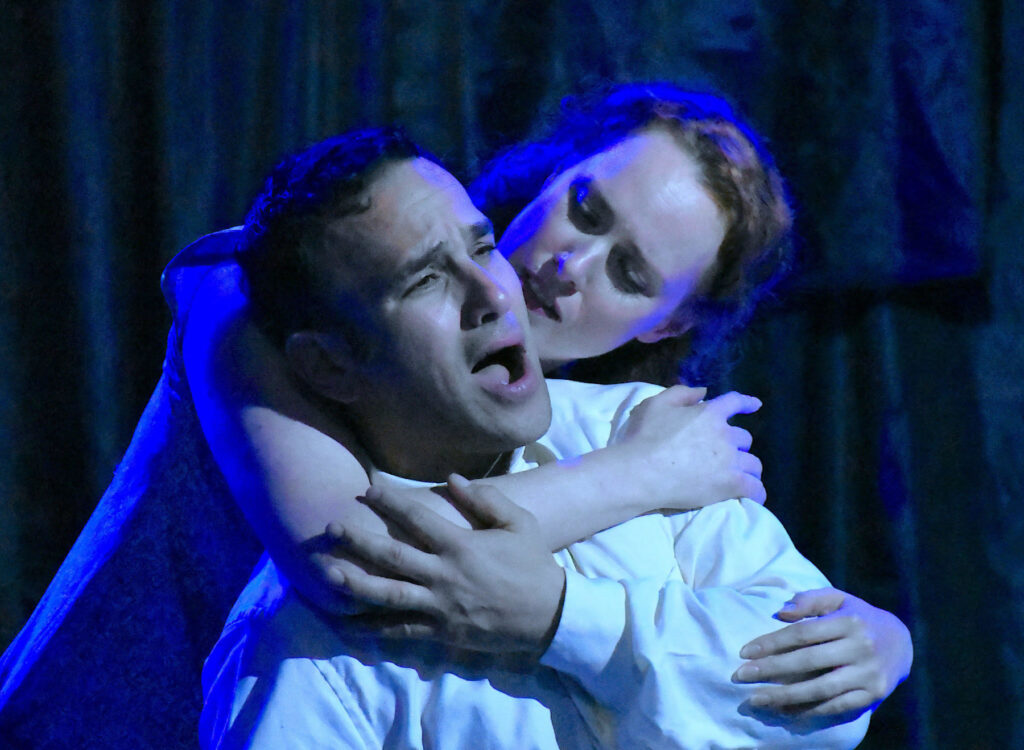Of Camille Saint-Saëns’s thirteen operas, only Samson and Dalila remains a regular part of the repertory. So, the enterprising New Sussex Opera must be congratulated on presenting the UK premiere of the composer’s first opera, Le Timbre d’argent, first given in Lewes, East Sussex, in May this year and supported by an effective English translation from Paul Featherstone. Previously, there had only been an opportunity to hear a recording of this work from the continental label Bru Zane when they released it in 2020 under the baton of the distinguished conductor François-Xavier Roth.
Saint-Saëns may have thought highly of his Silver Bell as it occupied him for nearly 50 years. Beset by reversals since the work’s commission in 1864, including funding difficulties, casting problems and an interruption caused by the Franco-Prussian war, the opera was eventually premiered in 1877 at the Théâtre de la Gaîté in Paris. Several revisions later the composer had begun to despair of his work, declaring in 1880 “It’s not an opera anymore, it’s a nightmare”. Thirty plus years passed by and in 1914 the work was presented in its final form (the last of ten revisions) as an opéra fantastique at the Théâtre de la Monnaiein Brussels.

Why it’s taken so long to reach the UK is a mystery, as this admirable score is full of ceaseless invention, not least in its varied orchestration and coupled with a convincing dramatic arc. Matters have not been helped, according to Hugh MacDonald’s excellent liner notes accompanying the disc, that there are no fewer than six different versions of the vocal score which reflect the various states of the opera between 1877 and 1913. Its stylistic variety seemingly incorporates material that could belong to Gilbert and Sullivan, Gounod or Offenbach. Indeed, Saint-Saëns claimed, “there’s a bit of everything in this work, which ranges from symphony to operetta by way of lyric drama and ballet”. Yet the subject matter concerning an obsessive also anticipates Korngold’s Die tote Stadt, another opera that took until this century for a first UK performance. And like that work, the central character of The Silver Bell, the impoverished artistConrad, is preoccupied with a disreputable dancer called Fiametta who he hopes will fulfil the role of Circé for his latest film production.
But the title of Saint-Saëns’s opera refers to the properties of a magical bell, given to Conrad by the Mephistophelean figure of Dr. Spiridion, which when struck will produce great riches, and the death of someone he knows. The temptation is too strong for Conrad who, persuaded by the shady doctor, makes use of the bell’s magical powers with fatal consequences, if relieving his financial woes. We can assume these anxieties are imaginary for by the end, it appears to have just been a dream and Conrad emerges from his troubled reverie embraced by his friends.

Onto Jules Barbier’s and Michel Carré’s libretto, director Paul Higgins has given a rich coating of Freudian psychoanalysis, setting the opera in early 20th century Vienna, envisaging a doctor-client examination during the Overture. Here we encounter a traumatised Conrad lying on a chaise longue over which a psychiatrist looms – a figure who might be Freud but is later discovered to be Dr Spiridion. Higgins’s interpretation also references the silent movie era (for which Saint-Saëns himself contributed music for the 1908L’assassinat du duc de Guise), by reimagining Conrad as film director who turns his unhealthy gaze on the femme fatale that is Fiametta, cast by the original creatives as a silent and seductive ballerina. That this period coincides with the arrival of Gothic horror films, with their morbid fantasies, both hallucinatory and supernatural, is outlined in Benjamin Poore’s programme essay drawing connections between the opera’s fantastical elements and cultural developments belonging to the time.
Much of the atmosphere of this NSO production is helped by Mollie Cheek’s sombre and effective designs, James Harvey’s ambient lighting and Namiko Gahier-Ogawa’s alluring choreography as Fiametta. Leading the cast is tenor Anthony Flaum, resounding of voice and suitably agitated in his attempts to control his paranoia and remorseful when unable to commit to the blameless Hélène whose unconditional love for him is apparent from Sky Imgram’s fulsome and, at times, Wagnerian soprano. Hélène’s sister Rosa is taken by Lucy Farrimond who makes the most of her appealing duets, the second on the day of her wedding to the unfortunate Bénédict (a clear-voiced Harun Tekin with the best diction in the house) who falls victim to Conrad’s greed. Taking on multiple roles is Armenian baritone Arshak Kuzikyan as the insidious, but comic Spiridion whose darker tones variously beguile and insinuate themselves over his hapless patient.

The hard-working chorus bring a vigorous commitment to The Silver Bell and, in the pit, the St Paul’s Sinfonia, under the assured guidance of Toby Purser, illuminates this imaginatively scored work (here reduced to chamber proportions) with some fine instrumental cameos. Thanks to the enterprise of New Sussex Opera, this thoroughly worthwhile work will have reached new audiences, affirming the developing skills of Saint-Saëns and the already established reputation of this impressive company.
David Truslove
The Silver Bell
Music: Camille Saint-Saëns
Libretto: Jules Barbier & Michel Carre with an English translation by Paul Featherstone
Cast and production staff:
Conrad – Anthony Flaum; Hélène – Sky Ingram; Spiridion – Arshak Kuzikyan; Rosa – Lucy Farrimond; Bénédict – Harun Tekin; Patrick – Hope Heaven; Circé-Fiametta – Namiko Gahier-Ogawa
Director – Paul Higgins; Designer – Mollie Cheek; Lighting – James Harvey; Dramaturg – Benjamin Poore; St Paul’s Sinfonia; New Sussex Opera Chorus; Conductor – Toby Purser
Theatre Royal, Winchester 8 June 2025
All photos © Colin Chapman